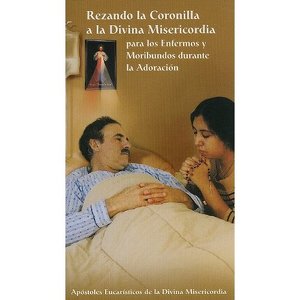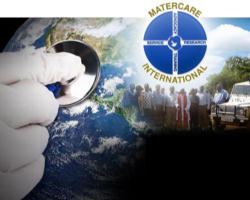1. Jesus asked for it.
St. Faustina Kowalska, was a young member of The Congregation of the Sisters of Our Lady of Mercy in Lodz, Poland. In the early 1930s, she received a series of messages from The Lord expounding His desire to extend mercy upon humanity. He asked her to write these messages down. Among the messages was the request for an image of Himself to be commissioned:
“Paint an image according to the pattern you see, with the signature: Jesus I Trust in You. I desire that this image be venerated, first in your chapel, and throughout the world.”(The Diary of St. Maria Faustina Kowalska, Divine Mercy in My Soul,47)
Further, the image was to be venerated in a special way and at a certain time:
“I want the image solemnly blessed on the first Sunday after Easter, and I want it to be venerated publicly so that every soul may know about it.” (The Diary of St. Maria Faustina Kowalska, Divine Mercy in My Soul, 341).
So, Jesus specifically asked for the Divine Mercy image to be painted and for a Feast of The Divine Mercy to be instituted on the Second Sunday of Easter. Interestingly enough, only young Sister Faustina’s religious superiors and spiritual director knew that these supernatural occurrences were taking place. It wasn’t until after she died that parts of the diary became public.
2. It was a complete surprise to the Church.
Sister Faustina’s diary became increasingly known among the Polish people, especially a priest named Karol Wojtyla. As Pope John Paull II, he would help to fulfill Jesus’ desire that His message of unfathomable mercy to sinners be spread to the entire world.
On the occasion of Blessed Faustina’s elevation to the dignity of the altar (her Mass of Canonization) The Pope Shocked the world by announcing the proclamation of a new observance on the liturgical calendar. He said, “It is important … that we accept the whole message that comes to us from the word of God on this Second Sunday of Easter, which from now on throughout the Church will be called “Divine Mercy Sunday.”
Needless to say it was kind of a surprise since only those who keenly paid attention to the decree of The Congregation for Divine Worship and the Discipline of the Sacraments a week earlier would have been aware of the surprise waiting in the middle of the now sainted pope’s homily.
3. It’s actually an opportunity to receive mercy.
More than just a passing observance of the mercy of Jesus, Divine Mercy Sunday is a day that Jesus wanted to extend His mercy to sinners. According to the diary of St. Faustina, Jesus requested Divine Mercy Sunday with an express purpose:
“The soul that will go to Confession and receive Holy Communion shall obtain complete forgiveness of sins and punishment.” (The Diary of St. Maria Faustina Kowalska, Divine Mercy in My Soul,, 699)
This is known as a plenary indulgence, and is one of the most misunderstood concepts of Catholic teaching. Whenever we sin, there are temporal effects due to the sins we commit. Even though the guilt may have been forgiven in Sacramental Reconciliation, there are still “ripples” that our actions (or omissions) cause for which we have to account. This is where the understanding of purgatory comes in.
It is in purgatory that we atone for these “ripples” or effects of our sin. We’re purged of all impurity before seeing God. Even though there’s no real way to measure time in purgatory, this purifying isn’t instantaneous. An indulgence is an application of the graces given by Christ’s saving actions on the cross as well as the redemptive suffering of the saints to a soul in need. The Church, specifically the successor of St. Peter (the pope) and in some cases a bishop, has the authority to dispense these graces called “indulgences”. They’re either partial or plenary (or full).
A plenary indulgence is complete remission of that punishment, just like Jesus claims in St. Faustina’s Diary. And it is on Divine Mercy Sunday (as well as other special times and days throughout the year) that the mercy of Jesus can be experienced in this way.
Bottom Line? Get to Confession if you haven’t already, receive Holy Communion, pray for The Holy Father and his intentions, and dive deep into the mercy of Jesus. He’s been waiting for you!
Father Chris Deckeris a priest for the Diocese of Baton Rouge, Louisiana. He writes for the blog forThe Catholic Underground, where this article was first published. This article is reprinted here with kind permission.
……………………………………
http://press.vatican.va/content/salastampa/en/bollettino/pubblico/2015/04/11/0259/00562.html









